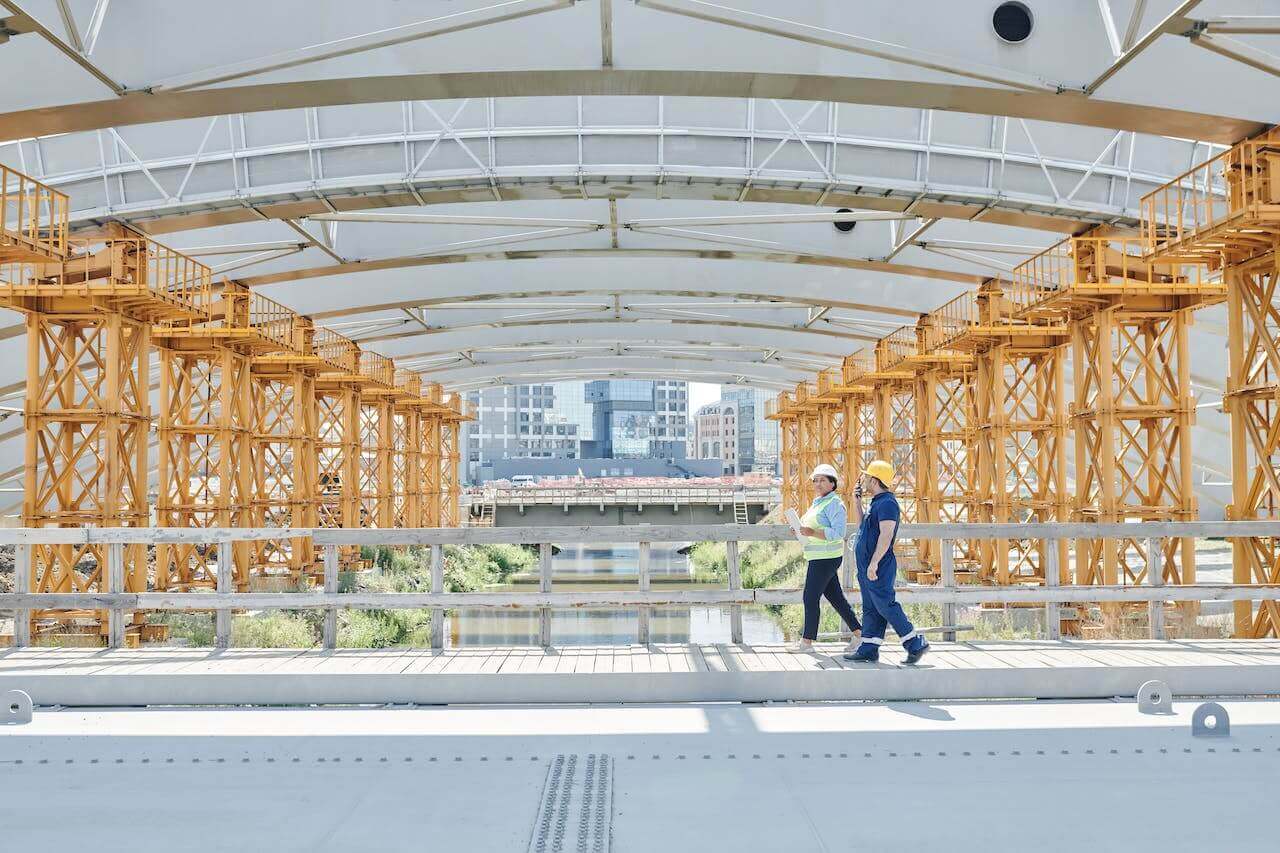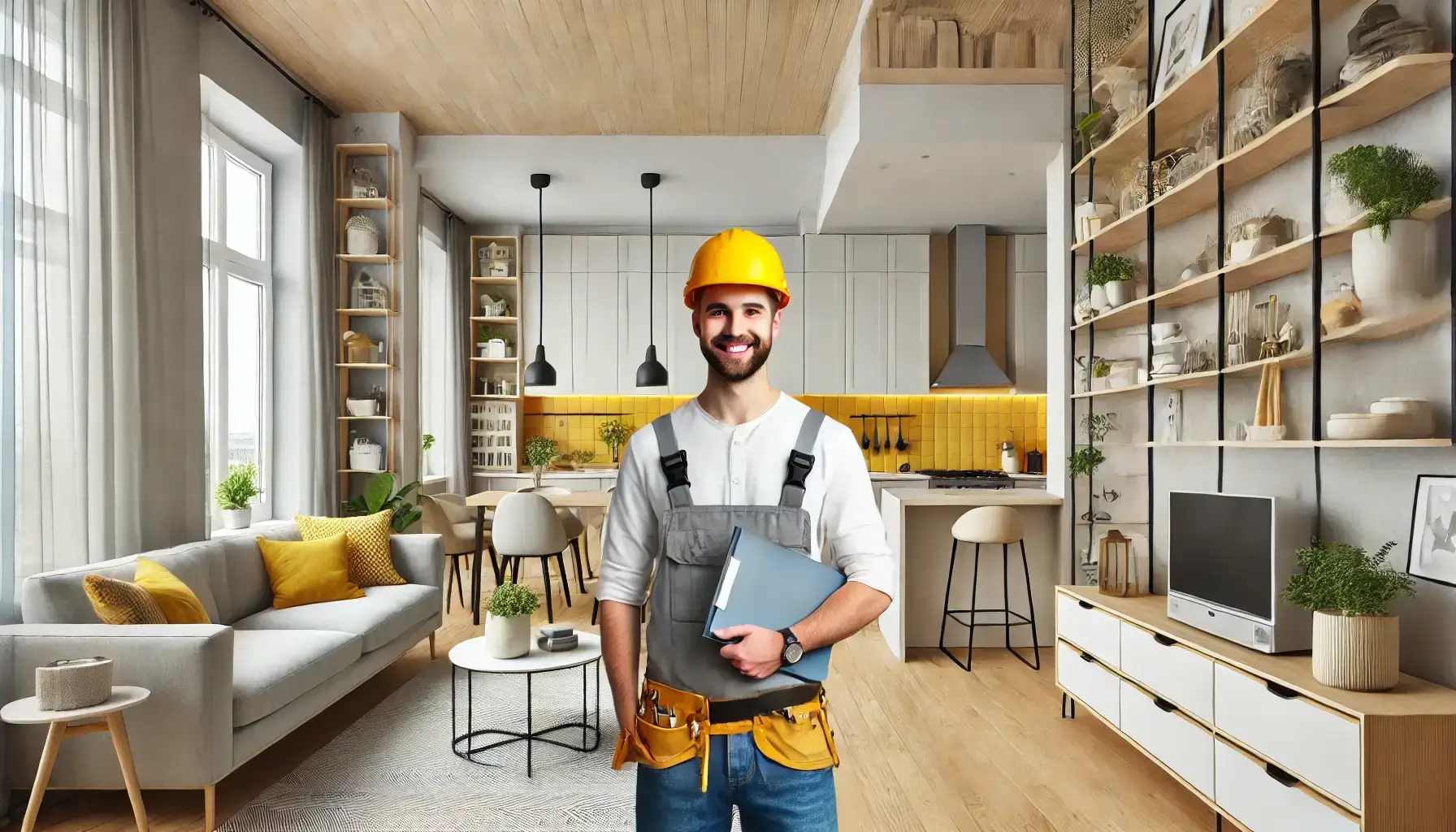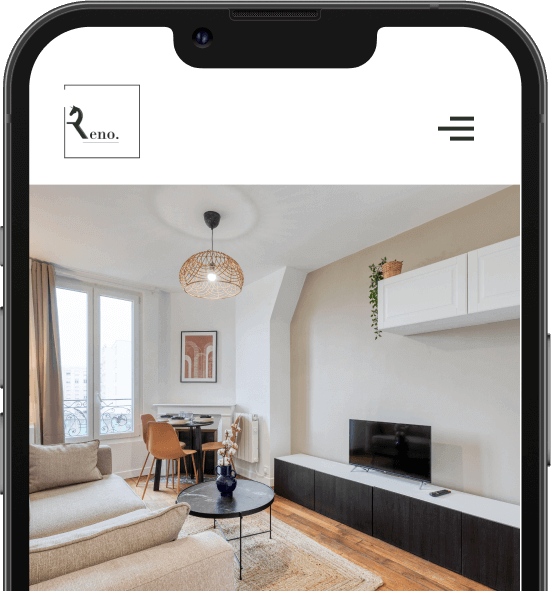An Architect with a Government Diploma (DPLG) is essential if you want to ensure the success of your home renovation project. An architect does more than just design interior spaces; they have the skills to turn your ideas into tangible reality. But what sets apart an ordinary architect from a "DPLG architect" ?
The DPLG architect, or Diplômé Par Le Gouvernement, embodies expertise, mastery of the craft, and the ability to transform dreams into structures. This profession is regulated in France, requiring specific qualifications, extensive training, and state authorization.
This term encompasses a range of key skills and knowledge crucial for successfully executing projects. These may involve designing new spaces, restoring existing structures, or transforming locations in accordance with modern standards and needs.
In this article, we'll delve into the crucial role of the DPLG architect in renovation, focusing on the required qualifications, responsibilities, and the benefits of engaging a certified professional. We'll delve into the realms of architecture, project management, construction, transformation, layout, and building extensions. Through this, we'll highlight the importance of state certification and authorization for project management. You'll discover how a DPLG architect can make a difference in the success of your renovation mission and project.
The Role of the DPLG Architect
When considering the role of the DPLG architect in construction or renovation, it's essential to recognize the significant impact a qualified professional can have on project success. Indeed, the DPLG architect deploys a set of qualifications and skills crucial at every stage of mission planning and management.
The DPLG architect excels in plan design. Their ability to visualize transformed spaces, integrate innovative architectural elements, and harmonize forms and functions is invaluable. By engaging such an expert, you ensure that your construction becomes a true artistic and functional work. Their mastery of interior design and interior architecture is a major asset, allowing them to create spaces that are both aesthetically pleasing and functional, in line with client needs.
Another crucial aspect is the DPLG architect's ability to comply with standards. Regulations and legal constraints can be complex. Certified professionals are well-versed in these requirements, ensuring that your project complies with all safety, construction, and urban planning standards. This expertise saves you a lot of trouble and potential delays, as your project is in expert hands.
Finally, the DPLG architect masters budget management. Construction can quickly become costly if not properly planned and monitored. Qualified architects master the art of project management, meaning they can help you maximize the value of every euro invested. They can develop realistic budgets, track expenses, and make adjustments along the way, ensuring that your construction or renovation stays within the financial boundaries you've set.
In summary, the DPLG architect brings a dimension of professionalism, creativity, and efficiency to any architectural project. Their expertise in creation, compliance with laws and standards, and rigorous budget management are invaluable assets for those seeking to achieve exceptional constructions or renovations. You can find your collaborator in specialized firms.

Qualifications of a DPLG Architect
The qualifications of a DPLG architect are the foundation of their ability to practice this profession competently and reliably. In France, obtaining the title of DPLG architect requires a rigorous path of training and skill acquisition. This typically involves graduating from one of the country's prestigious architecture schools, having completed a comprehensive curriculum in the field.
The first architect diploma was established in 1867 to structure the profession, which found itself overshadowed by engineers. It was through the creation of the Architects' Society, initiated by graduates of the École des Beaux-arts, that a first gathering took place in 1877.
On March 13, 1914, an official decree established the title of DPLG architect. Much later, the Order of Architects was formed on December 31, 1941. To become a DPLG architect, one needed to possess an architecture degree and be registered with the Order of Architects.
It was also essential for the DPLG architect to have professional liability insurance to practice their profession and act as a project manager if they were to work on a project larger than 170 square meters. A change occurred in 2007 when the DPLG architect became known as an architect DE, meaning State Graduate. This also led to some changes in the educational curriculum.
Educational Path
To become a DPLG architect, an individual typically undergoes university training in architecture, which includes a Master's degree in architecture. This training is essential for acquiring the technical and conceptual skills necessary. Then, the aspiring architect must continue their studies to obtain a State diploma in architecture, which is a crucial step towards achieving DPLG qualification. These years of study prepare future architects to tackle a variety of projects, from architectural design to project management.
So, the DPLG architect obtained their diploma before 2007; after this year, their title is architect DE. To practice, they must :
– Hold a Master's degree from an architecture school such as ENSA, ESA, or INSA.
– Be registered with the Order of Architects to obtain their architect title.
The DPLG architect earns their degree after 7 years of study, or BAC +7, followed by a probationary period. This means that, in addition to academic training, the DPLG architect must complete a professional internship under the supervision of an experienced architect. This internship allows them to put their acquired skills into practice and become familiar with the realities of the profession. It serves as a crucial transition between theoretical learning and professional practice. And that's not all; to obtain the DPLG qualification, the architect must also pass a rigorous state examination. This exam evaluates the individual's ability to design, manage, and supervise complex architectural projects, as well as to comply with current standards and regulations. It is a crucial step to ensure that only the most qualified professionals receive the DPLG qualification.
– The architect DE graduates after 5 years of study, or BAC +5.
– It should also be noted that only the DPLG architect is authorized for project management.
The architect DE cannot act as a project manager on an architectural project, meaning they cannot be responsible for a site exceeding 150 square meters. They will only work as an employee of an agency or as a civil servant.
Les organisations professionnelles comme l’Ordre des Architectes jouеnt un rôle important dans l’encadrement de la profession d’architecte en France. Ellеs définissеnt des normes éthiques et professionnelles et elles fournissent un soutien aux architectes tout au long de leur carrière. Ces organismes vеillеnt à cе que les architectes DPLG maintiennent leurs compétences à jour et respectent les normes de déontologiе professionnelle.
Becoming a DPLG or DE-HMONP architect in France requires a commitment to learning, ongoing training, and adherence to professional standards. These qualifications and skills are essential to ensure that projects are in the hands of highly qualified professionals capable of effectively managing all aspects of creation and management.

How to Find a DPLG Architect?
Finding and hiring a DPLG architect for your project can be an essential step for its success. Here's how you can proceed and why collaborating with this specialist is invaluable.
To find a DPLG architect, the first step would be to consult the Architects' Order. This organization regulates the profession and can provide you with a list of experts in your area. It's a reliable source for finding experienced DPLG architects. Another option is to consult professional associations, specialized websites, or ask for recommendations from friends, colleagues, or neighbors who have worked with a DPLG architect.
Once you have identified potential candidates, you should review their portfolios. Experienced DPLG architects should have a strong track record to present, including similar projects. This will allow you to get an idea of their style, expertise, and ability to meet your specific needs.
An essential aspect when searching for a DPLG architect is to meet the candidates in person. A face-to-face meeting allows you to discuss your ideas, goals, and budget. It's also an opportunity to assess the compatibility between you and the architect, as a harmonious collaboration is essential for a successful project.
One of the major benefits of working with a qualified DPLG architect lies in their ability to turn your ideas into a concrete reality. Their extensive training and expertise in architectural design enable them to create spaces that are both aesthetically pleasing and functional. They can also help you navigate regulations and standards, which is essential to avoid legal issues and delays. Moreover, their rigorous budget management helps ensure that your project stays within the financial limits you've set. Ultimately, collaborating with a DPLG architect brings assurance of quality and professionalism to your renovation project.
The fee for the services of a DPLG architect
The cost of hiring a DPLG architect can vary depending on several factors, including the nature and scope of the project, geographical location, and the architect's level of expertise. However, it's essential for homeowners to understand the typical costs associated with hiring a DPLG architect, as well as ways to manage their budget effectively.
The fees of a DPLG architect are generally established based on different calculation methods. Some architects charge a percentage of the total project cost, which can range from 8% to 15%, depending on the complexity and size of the project. Others prefer to charge an hourly rate, which varies depending on their experience and the geographical region.
– The average salary of a DPLG architect in France is €43,000 per year or €24 per hour.
– Those who are new to the profession earn an average salary of around €35,000 per year.
– Experienced architects, on the other hand, earn up to €60,000 per year.
The benefits of hiring a DPLG architect generally justify the cost. Their expertise in design, project management, and adherence to standards can help save money in the long term by avoiding costly mistakes. Moreover, their ability to optimize space usage, maximize energy efficiency, and create timeless designs can increase the value of your property.
To manage your budget effectively while working with a DPLG architect, it's recommended to openly discuss your financial constraints early in the process. The architect can adjust the project accordingly and propose solutions that fit your budget. Additionally, it's wise to request detailed quotes and keep regular track of expenses throughout the project to avoid budget overruns.
In some cases, it may be advantageous to choose an architect who offers comprehensive project management services, as this can streamline the coordination of all aspects of the project and avoid hidden costs. Ultimately, to effectively manage your budget while benefiting from the services of a DPLG architect, open communication and careful planning are essential. This approach will allow you to succeed in your project without worrying about unforeseen expenses.

DPLG Architect: What to Remember
L’architecte DPLG est un acteur incontournable еt précieux dans la réussite des chantiers de rénovation et de construction. Sa formation approfondie, son expertise en conception architecturale, son respect des normes et sa capacité à gérer efficacement le budget font dе lui un professionnel essentiel pour concrétiser vos projets.
The value of the DPLG architect lies in their ability to design spaces that combine aesthetics, functionality, and durability. They are also aware of the latest trends in design and technology, allowing them to integrate modern elements into their projects.
Hiring a DPLG architect is not just an investment in quality; it's also insurance against costly mistakes and potential delays. Their willingness to adhere to standards and navigate regulations is crucial to avoid legal issues. Moreover, their rigorous budget management helps ensure that the project stays within the financial limits you've set.





